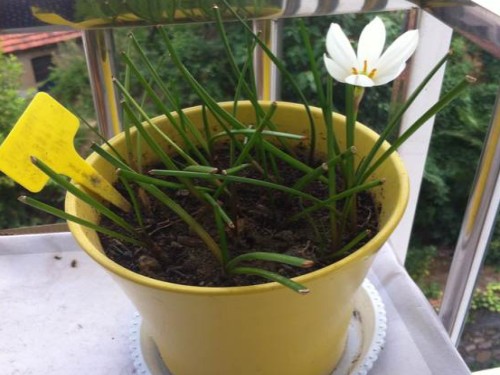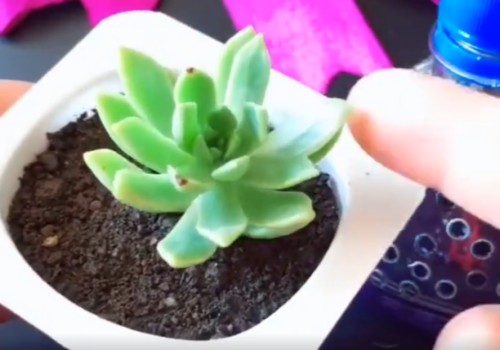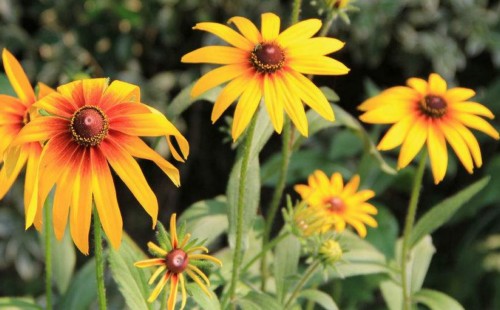What are the differences between onion orchids and leek orchids in understanding the main points of plants?
Green onion orchid and leek orchid know each other very well, life we see green onion orchid and leek orchid we do not carefully distinguish everyone will think that it is the same plant, we may also think that green onion orchid is another name for leek orchid, it is not like this, today I would like to introduce green onion orchid and leek orchid the same? The difference between green onion orchid and leek orchid.

Onion orchid is a perennial herb. The bulb is ovate, about 2.5 cm in diameter, with a conspicuous neck, 2.5-5 cm in length. Leaves narrowly linear, fleshy, bright green, 20-30 cm long and 2-4 mm wide. Flower stem hollow; flowers solitary on top of flower stem, with brownish bract-like involucre below, involucre tip 2-lobed; pedicel ca. 1 cm long; flowers white, often reddish outside; few perianth tube, perianth segments 6, 3-5 cm long, tip obtuse or with mucronate tip, ca. 1 cm wide, often with very small scales near throat; stamens 6, ca. 1 × 2 as long as perianth; style slender, stigma inconspicuously 3-lobed. Capsule subglobose, ca. 1.2 cm in diam., 3-merous dehiscent; seeds black, flattened. Flowering in autumn.
Green onion orchid has a special habit. Although it likes light, it is resistant to semi-overcast. If the light is too strong, it is easy to scorch it, which is not conducive to its growth and development, but it can grow well in a semi-shady environment, such as in the shade of a tall tree or on the shady side of a high wall. At the same time, it also likes warmth, but it also has strong cold resistance. Like to be moist and resistant to low humidity. Like well-drained, fertile and slightly clayey soil.
Chinese chive is a perennial herb. Bulb ovoid, 2-3 cm in diam. Basal leaves often fascicled, linear, flattened, 15-30 cm long and 6-8 mm wide. Flowers solitary at the top of the flower stem, with a flamboyant involucre, involucral bracts often purplish red, 4-5 cm long, proximally connate into a tube; pedicel 2-3 cm long; flowers rosy or pink; perianth tube 1-2.5 cm long, perianth lobes 6, lobes Obovate, tip slightly acute, 3-6 cm long; stamens 6, ca. 2 bank 3-4 pedicel 5 as long as perianth, anthers T-shaped. Ovary inferior, 3-loculed, ovules numerous, style slender, stigma deeply 3-lobed. Capsule subglobose; seeds black. Flowering, summer and autumn.
- Prev

What are the main points of understanding plants? what are the reasons for succulent stuffy cultivation?
For succulent plants, stuffy culture is also a maintenance method, but not all succulent plants are suitable for stuffy cultivation, and even succulent varieties that can be stuffed are usually suitable at a certain stage. Even for different succulent varieties, stuffy
- Next

What is the difference between perennial flowers and woody flowers? understanding the habits and conservation of plants
For friends who like to grow flowers and plants, in order to raise their own plants, we need to know about them in advance, especially in terms of growth habits. On the other hand, people usually raise flowers and plants mainly with perennial roots and woody flowers, but before planting, do you
Related
- What if the leaves of potted flowers turn yellow?
- Florescence Control of several Flowers
- Anti-freezing technology and post-freezing nursing technology of flowers
- What is the classification of flowers? What are the common methods of flower classification?
- Prevention and control of alkali and acid damage of flowers in courtyard
- Technology of Anti-freezing and restoring growth of Flower seedlings in greenhouse and greenhouse
- How does flower fertilization not hurt the root? Fertilization technology of flowers
- Key points of disinfection in flower greenhouse
- Several pesticides that are banned or used cautiously in flowers
- How to fertilize the flowers that watch the leaves?

